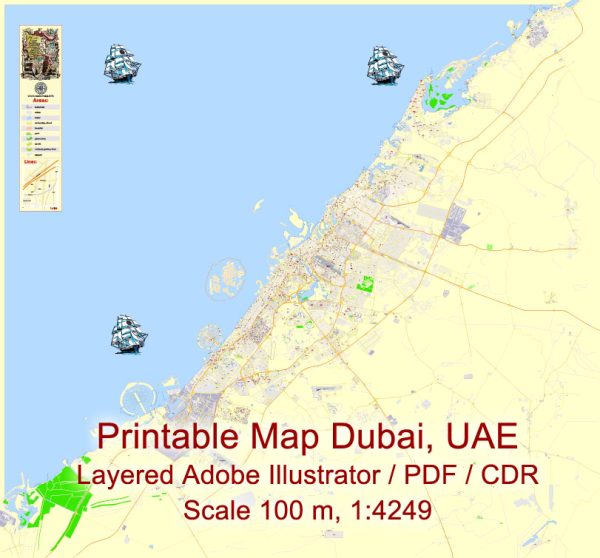Dubai, a city and emirate in the United Arab Emirates (UAE), has undergone a remarkable transformation in the past few decades, evolving from a small trading and fishing settlement into a global hub for business, tourism, and luxury living. The history of Dubai’s urban development is a fascinating journey that highlights visionary leadership, strategic planning, and a commitment to innovation.
- Early Years and Traditional Economy (Pre-20th Century):
- Dubai’s history dates back to ancient times, with evidence of human settlement in the area as far back as 3000 BCE. The city’s early economy was based on pearl diving, fishing, and trading with neighboring regions.
- Oil Discovery (20th Century):
- The real turning point in Dubai’s history occurred in the 20th century with the discovery of oil in the 1960s. This discovery brought significant wealth to the region and laid the foundation for future development.
- Formation of the UAE (1971):
- In 1971, the United Arab Emirates was formed, with Dubai as one of its founding members. This marked a crucial moment in the city’s history as it became a key player in the newly established federation.
- Diversification and Visionary Leadership:
- Sheikh Rashid bin Saeed Al Maktoum, the ruler of Dubai from 1958 to 1990, played a pivotal role in shaping the city’s destiny. His vision for economic diversification beyond oil and a commitment to modernization laid the groundwork for Dubai’s urban development.
- Infrastructure and Urban Planning:
- Dubai invested heavily in infrastructure development, creating a modern and efficient transportation system, including an extensive road network and the Dubai Metro. The city’s skyline was transformed with iconic skyscrapers, such as the Burj Khalifa, the world’s tallest building.
- Free Zones and Business Environment:
- To attract international businesses, Dubai established free zones that offered tax exemptions and other incentives. This strategy turned Dubai into a global business hub, particularly in sectors like finance, trade, and tourism.
- Tourism and Real Estate Boom:
- The launch of projects like the Palm Jumeirah and the Dubai Marina contributed to the city’s reputation as a luxury destination. Dubai’s tourism sector boomed, attracting visitors with its modern architecture, luxury shopping, and world-class entertainment.
- Cultural Developments:
- Dubai also invested in cultural development, with the construction of landmarks like the Dubai Opera and the Dubai Mall, emphasizing a balanced approach between economic growth and cultural enrichment.
- Sustainable Development:
- In recent years, there has been a growing emphasis on sustainable development. Initiatives like the Dubai Clean Energy Strategy 2050 highlight the city’s commitment to renewable energy and environmental responsibility.
- Expo 2020:
- Dubai hosted Expo 2020, a global event that showcased the city’s capabilities and ambitions. The event attracted millions of visitors and further positioned Dubai as a global center for innovation and collaboration.
Dubai’s history of urban development reflects a unique blend of tradition and modernity, propelled by strategic planning, visionary leadership, and a commitment to innovation. The city continues to evolve, embracing new challenges and opportunities on its journey to becoming a global metropolis.


 Author: Kirill Shrayber, Ph.D.
Author: Kirill Shrayber, Ph.D.